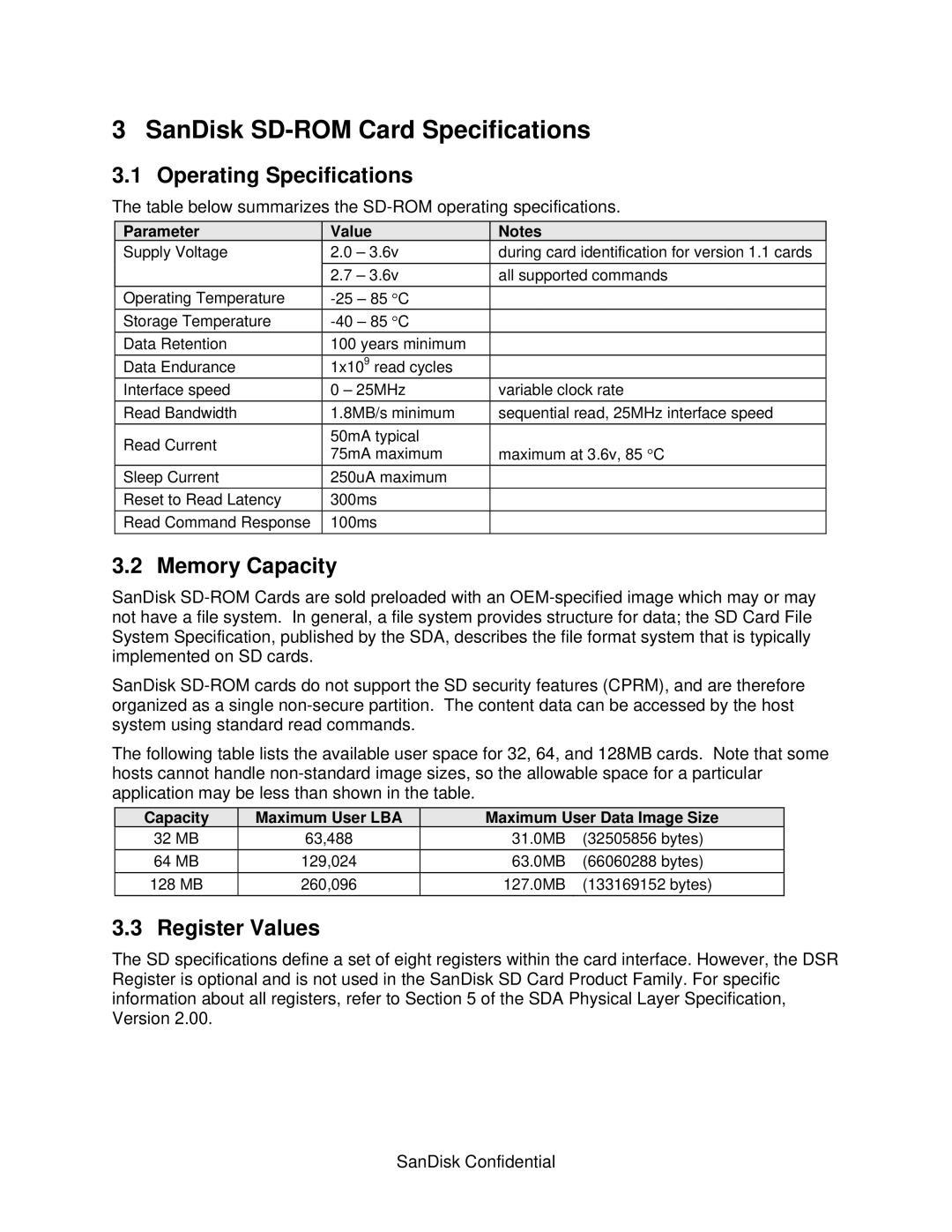3 SanDisk SD-ROM Card Specifications
3.1 Operating Specifications
The table below summarizes the SD-ROM operating specifications.
| Parameter |
| Value |
| Notes |
| Supply Voltage |
| 2.0 – 3.6v |
| during card identification for version 1.1 cards |
|
|
| 2.7 – 3.6v |
| all supported commands |
| Operating Temperature |
|
|
| |
| Storage Temperature |
|
|
| |
| Data Retention |
| 100 years minimum |
|
|
| Data Endurance | 1x109 read cycles |
|
| |
| Interface speed |
| 0 – 25MHz |
| variable clock rate |
| Read Bandwidth | 1.8MB/s minimum | sequential read, 25MHz interface speed | ||
| Read Current |
| 50mA typical |
|
|
|
| 75mA maximum |
| maximum at 3.6v, 85 °C | |
|
|
|
| ||
| Sleep Current | 250uA maximum |
|
| |
| Reset to Read Latency |
| 300ms |
|
|
| Read Command Response |
| 100ms |
|
|
3.2 Memory Capacity
SanDisk
SanDisk
The following table lists the available user space for 32, 64, and 128MB cards. Note that some hosts cannot handle
Capacity | Maximum User LBA | Maximum User Data Image Size | |
32 MB | 63,488 | 31.0MB | (32505856 bytes) |
64 MB | 129,024 | 63.0MB | (66060288 bytes) |
128 MB | 260,096 | 127.0MB | (133169152 bytes) |
3.3 Register Values
The SD specifications define a set of eight registers within the card interface. However, the DSR Register is optional and is not used in the SanDisk SD Card Product Family. For specific information about all registers, refer to Section 5 of the SDA Physical Layer Specification, Version 2.00.
